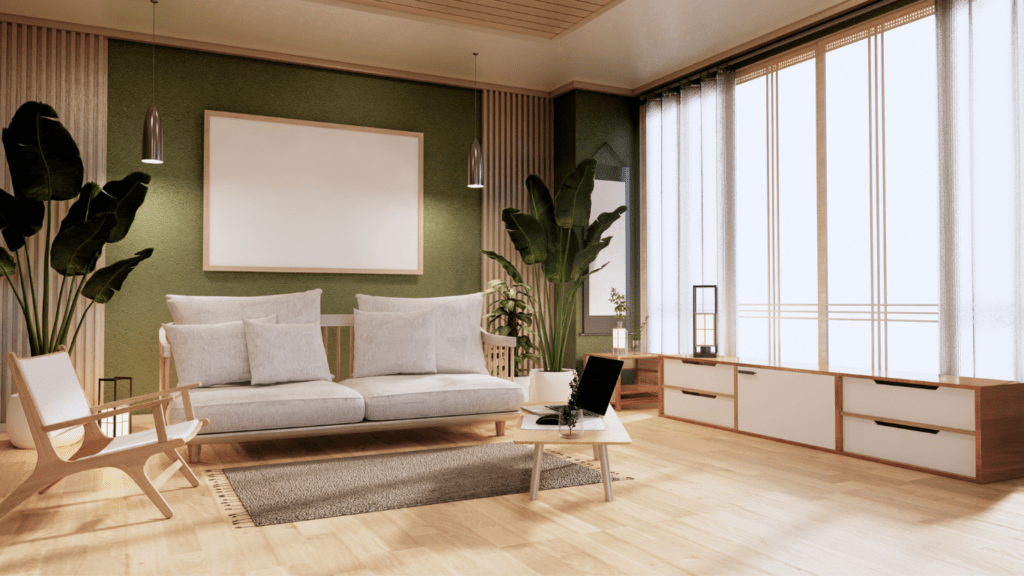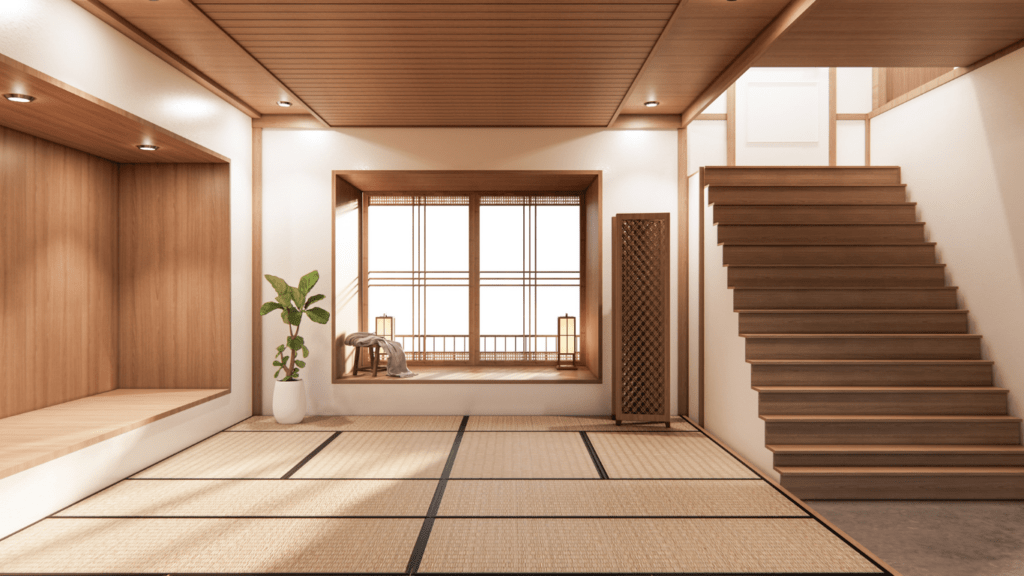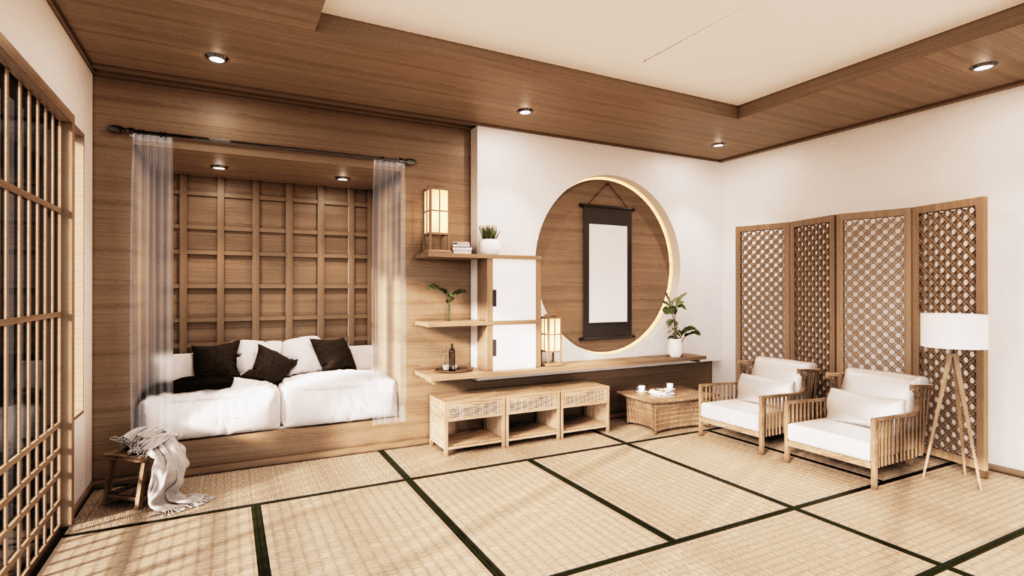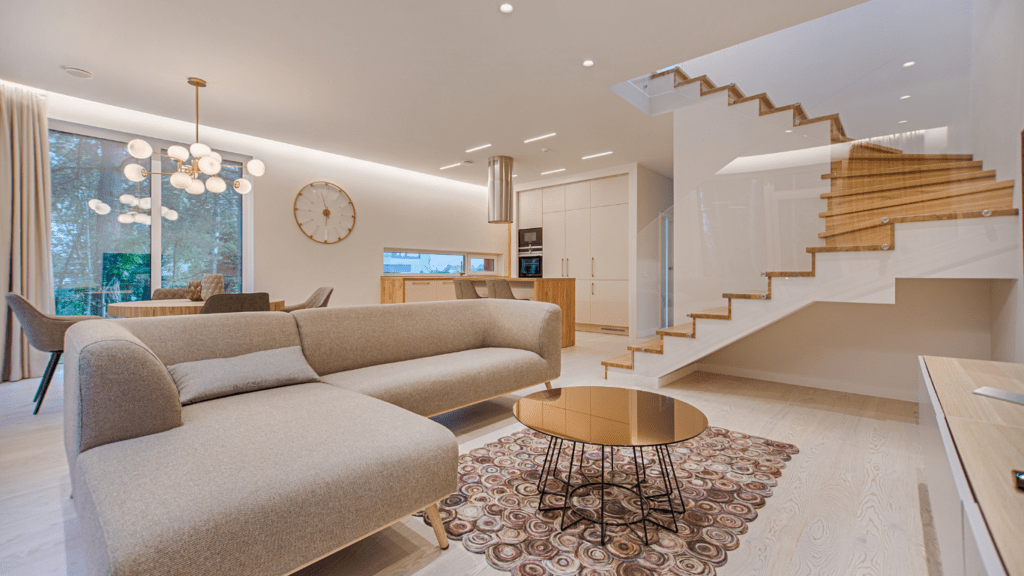The Rise of Sustainable Interior Design
Sustainable interior design prioritizes resource-efficient practices and eco-friendly materials. I’ve noticed more homeowners seeking ways to make their living spaces environmentally responsible. This shift reflects a broader awareness of how daily choices impact the planet.
Repurposed materials have become staple elements in eco-friendly homes. I often recommend using reclaimed wood for flooring or furniture. These pieces have unique character and reduce the need for new raw materials. Using recycled glass for countertops and backsplashes also illustrates this trend, adding both beauty and sustainability to kitchens and bathrooms.
Energy-efficient lighting is another key aspect of sustainable design. LED bulbs, which consume up to 80% less energy than traditional incandescent bulbs, are popular for their longevity and lower environmental impact. I find that integrating smart lighting systems can further enhance energy efficiency by allowing homeowners to control usage remotely.
Low-VOC (Volatile Organic Compounds) paints are gaining traction for healthier indoor air quality. Conventional paints release harmful emissions, but low-VOC options minimize these pollutants. I always suggest these paints to create healthier home environments without compromising on color and finish.
Finally, incorporating natural elements like plants improves air quality and creates serene atmospheres. Indoor plants absorb toxins and release oxygen, making them perfect for eco-friendly homes. I typically recommend easy-to-maintain varieties such as snake plants or pothos to clients who want low-maintenance green spaces.
Key Principles of Eco-Friendly Interior Design
Eco-friendly interior design balances aesthetics with environmental responsibility. It focuses on making sustainable choices that reduce our ecological footprint.
Use of Recycled and Upcycled Materials
Using recycled and upcycled materials helps reduce waste and conserves resources. I often incorporate reclaimed wood, recycled glass, and repurposed metal in my designs. Reclaimed wood, for instance, adds unique character to furniture and flooring. Recycled glass tiles can create stunning mosaics, while repurposed metal fixtures add an industrial touch. Choosing these materials supports sustainability and gives a second life to items otherwise discarded.
Incorporating Natural Light and Ventilation
Maximizing natural light and ventilation reduces energy consumption and creates healthier indoor environments. I recommend designing spaces with large windows, skylights, and open floor plans. These elements increase daylight penetration and airflow. Position windows to optimize solar gain in winter and minimize it in summer. Install operable windows and transoms to enhance cross-ventilation. This approach lessens reliance on artificial lighting and air conditioning, lowering energy bills and improving indoor air quality.
Energy-Efficient Appliances and Fixtures
Energy-efficient appliances and fixtures are crucial for sustainable interior design. I suggest selecting LED lighting, ENERGY STAR-rated appliances, and low-flow water fixtures. LEDs consume less energy and last longer than traditional bulbs. ENERGY STAR appliances, such as refrigerators and dishwashers, use less electricity without sacrificing performance. Low-flow faucets and showerheads conserve water while maintaining strong pressure. Implementing these products lowers utility costs and reduces environmental impact.
Sustainable Furniture Choices
Sustainable furniture choices highlight materials and practices that are environmentally responsible. Let’s dive into key options to make your home more eco-friendly.
Certified Sustainable Wood

Using certified sustainable wood ensures that the furniture comes from responsibly managed forests. The Forest Stewardship Council (FSC) certification guarantees that wood products meet eco-friendly and social standards. When selecting wooden furniture, always look for the FSC logo to confirm that the material was harvested sustainably without causing deforestation.
Examples:
- Dining tables
- Cabinets
- Bed frames
These items, when FSC-certified, support forest conservation and responsible sourcing.
Reclaimed and Vintage Pieces
Reclaimed and vintage pieces repurpose existing materials, reducing the demand for new resources. Reclaimed wood from old barns or warehouses adds character and history to furniture. Vintage items also offer unique styles, often with superior craftsmanship compared to modern mass-produced pieces.
Choosing reclaimed and vintage pieces not only minimizes waste but also brings distinct charm to home interiors.
Examples:
- Coffee tables made from barn wood
- Antique dressers
- Industrial-style shelving units
These sustainable choices help manage resource consumption and reduce environmental impact.
Eco-Friendly Décor Elements
Eco-friendly décor elements enhance sustainability in interior design by incorporating natural and non-toxic materials. They combine aesthetics with environmental responsibility.
Natural Fiber Textiles
- Natural fiber textiles offer a sustainable alternative to synthetic fabrics while adding a touch of nature to home interiors.
- Materials like organic cotton, linen, hemp, and bamboo are excellent options.
- Organic cotton is grown without pesticides, conserving soil health.
- Linen, derived from flax plants, requires minimal water during cultivation.
- Hemp is highly durable and grows quickly with little water.
- Bamboo, known for its rapid renewability, is also naturally antibacterial.
- Examples of these textiles include organic cotton bed sheets, hemp rugs, and bamboo drapes.
- These materials not only reduce environmental impact but also offer durability and a unique aesthetic.
Low-VOC Paints and Finishes
Low-VOC paints and finishes are essential for improving indoor air quality. Traditional paints release volatile organic compounds (VOCs) that contribute to indoor pollution and health issues. Low-VOC options minimize these harmful emissions.
Choosing low-VOC paints ensures a healthier living environment without sacrificing color or finish quality. Brands often offer a wide range of colors and finishes, allowing for versatile and stylish interior design choices. For example, a low-VOC matte finish can create a calm and modern atmosphere, while a low-VOC semi-gloss finish might add a touch of elegance to trims and doors.
Indoor Greenery and Living Walls
Indoor greenery and living walls bring natural elements indoors, enhancing both aesthetics and air quality. Incorporating plants and green walls in home design creates serene, eco-friendly spaces.
Benefits of Indoor Plants
Indoor plants, including species like snake plants and spider plants, improve air quality by filtering pollutants like formaldehyde and benzene. They also boost mental well-being by reducing stress levels and enhancing mood. Plants like peace lilies and English ivy are known for their low maintenance and air-purifying properties, making them ideal for busy households. Moreover, indoor plants contribute to humidity control, preventing dry air in heated environments.
Creating Vertical Gardens
Creating vertical gardens, or living walls, maximizes space in smaller homes while adding vibrant, green decor. These installations can use pre-planted panels or modular systems for easy setup. Vertical gardens often utilize dracaena, ferns, and pothos for their adaptability and low-light tolerance. When designing a living wall, it’s essential to ensure proper drainage and irrigation to keep plants thriving. Using reclaimed wood or recycled metal for the garden structure aligns with sustainable design principles, further reducing environmental impact.
Smart Home Technology for Energy Conservation
Smart home technology offers innovative solutions for conserving energy. By integrating intelligent systems, homeowners can significantly reduce their energy consumption and environmental impact.
Programmable Thermostats
Programmable thermostats provide precise control over heating and cooling schedules. They allow users to set different temperatures for various times of the day. For example, I can program the thermostat to lower the temperature at night when I’m asleep and raise it before I wake up. According to the U.S. Department of Energy, using a programmable thermostat can save up to 10% on heating and cooling costs annually by optimizing temperature control.
Energy Monitoring Systems
Energy monitoring systems track and manage household energy use in real-time, enabling informed decisions about energy consumption. These systems can break down energy use by each device or appliance. For instance, I can identify which appliances consume the most electricity and adjust usage patterns accordingly. The Lawrence Berkeley National Laboratory reports that such systems can help reduce household energy consumption by up to 15%. Popular options include smart plugs and whole-home energy monitors, providing a comprehensive understanding of energy use.
Homeowners who adopt smart technology not only conserve energy but also contribute to a more sustainable future.



 Harry Marriott – Lead Interior Stylist
Harry Marriott is Castle Shelf House’s Lead Interior Stylist, known for his keen eye for detail and expertise in modern and classic home designs. With a background in interior architecture, Harry brings innovative styling solutions to the forefront, ensuring that each home reflects a unique personality. His approach to furniture placement and design trends helps clients create harmonious living spaces that combine aesthetics with functionality.
Harry Marriott – Lead Interior Stylist
Harry Marriott is Castle Shelf House’s Lead Interior Stylist, known for his keen eye for detail and expertise in modern and classic home designs. With a background in interior architecture, Harry brings innovative styling solutions to the forefront, ensuring that each home reflects a unique personality. His approach to furniture placement and design trends helps clients create harmonious living spaces that combine aesthetics with functionality.
